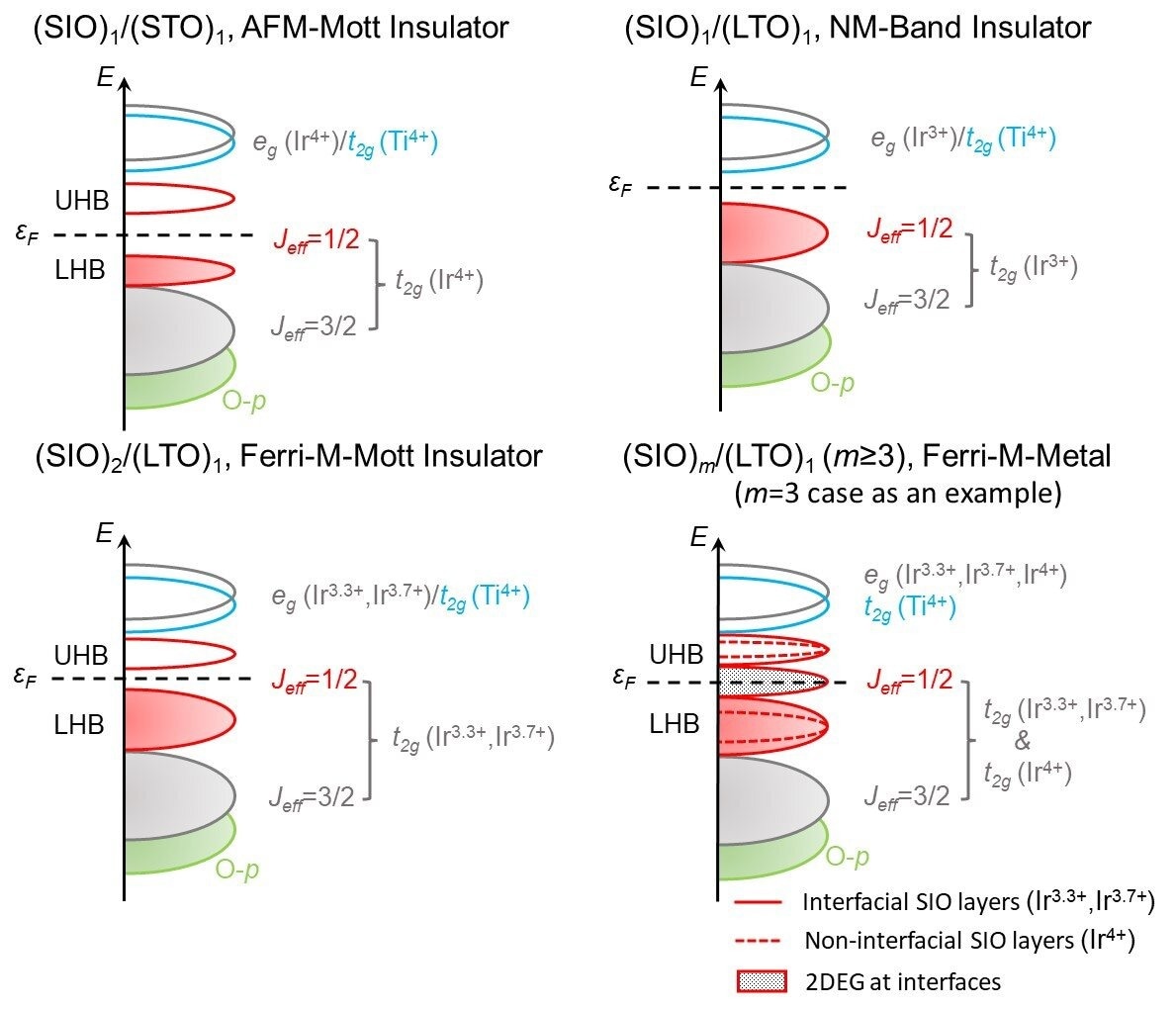Reviewed by Lexie CornerOct 16 2024
A study published in ACS Applied Electronic Materials by Professor Yang Xiaoping’s team at the Hefei Institutes of Physical Science’s High Magnetic Field Laboratory uncovered a controllable and tunable monoatomic layer of two-dimensional electron gas (2DEG). This 2DEG is localized at the heterointerface, providing new insights into electronic materials.
 Schematic illustration of band alignment in different SrIrO3-based superlattices. Image Credit: Yang Xiaoping
Schematic illustration of band alignment in different SrIrO3-based superlattices. Image Credit: Yang Xiaoping
The Mott insulator-metal transition is a key focus in condensed matter physics due to its potential applications in devices and superconductivity when doped. In 5d iridates, spin-orbit coupling (SOC) is much stronger than in 3d transition metal oxides, leading to the splitting of Ir 5d-t2g bands into Jeff = 1/2 and Jeff = 3/2.
In this study, density functional theory was used to explore the electronic properties of
Currently, many methods are used to modify the electronic structure and characteristics of materials using artificial heterointerfaces.
This study used density functional theory to explore the electronic properties of (SrIrO3)m/(LaTiO3)1 superlattices. The researchers found that interfacial polarity differences and oxygen octahedral distortions lead to integer charge transfer between LaTiO3 and SrIrO3.
By doping the A-site of LaTiO3 or altering the SrIrO3 layers (m), researchers can modify the oxidation states of Ir and control the number of electrons transferred to each Ir atom. This manipulation led to various electronic states, such as ferrimagnetic metals, ferrimagnetic Mott insulators, ferromagnetic metals, and nonmagnetic band insulators.
When m is greater than or equal to 3, the SrIrO3 layers exhibit an insulator-metal transition. Interestingly, the charge transfer and the formation of a two-dimensional electron gas (2DEG) occur only at the interface, unlike in the 3D LaAlO3/SrTiO3 system, where the 2DEG extends beyond the interface. These findings provide new insights into nanoscale oxide electronics and unconventional iridate superconductivity.
Journal Reference:
Li, M. et. al. (2024) Tunable 5d-t2g Mott State and Monoatomic Layer Two-Dimensional Electron Gas Realized in Spin–Orbit-Coupled SrIrO3 through Heterostructuring. ACS Applied Electronic Materials. doi.org/10.1021/acsaelm.4c01015